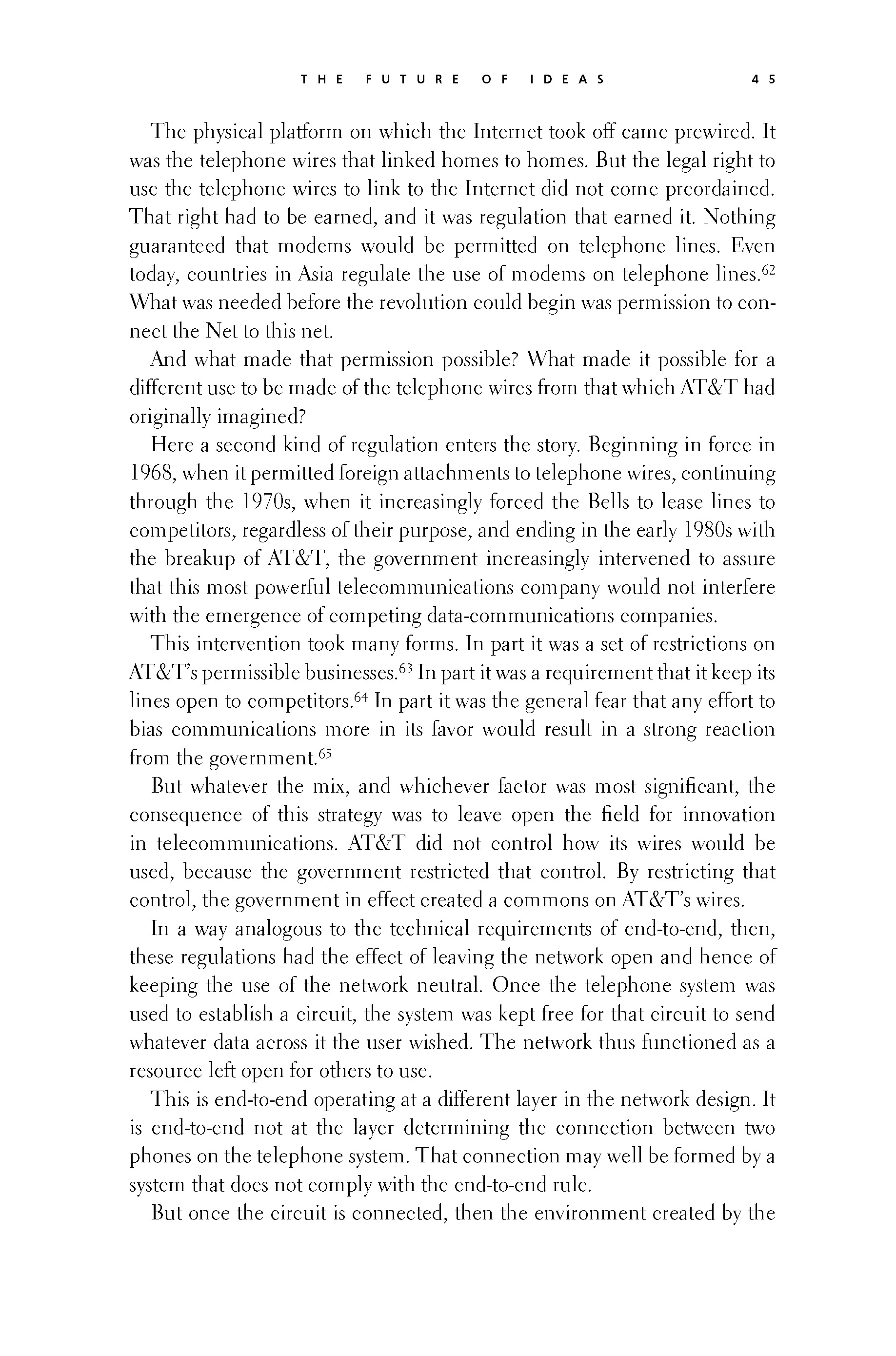 p044 _
-chap- _
toc-1 _
p045w _
toc-2 _
+chap+ _
p046
p044 _
-chap- _
toc-1 _
p045w _
toc-2 _
+chap+ _
p046
The physical platform on which the Internet took off came prewired. It
was the telephone wires that linked homes to homes. But the legal right to
use the telephone wires to link to the Internet did not come preordained.
That right had to be earned, and it was regulation that earned it. Nothing
guaranteed that modems would be permitted on telephone lines. Even
today, countries in Asia regulate the use of modems on telephone lines.[3-62]
What was needed before the revolution could begin was permission to con-
nect the Net to this net.
And what made that permission possible? What made it possible for a
different use to be made of the telephone wires from that which AT&T had
originally imagined?
Here a second kind of regulation enters the story. Beginning in force in
1968, when it permitted foreign attachments to telephone wires, continuing
through the 1970s, when it increasingly forced the Bells to lease lines to
competitors, regardless of their purpose, and ending in the early 1980s with
the breakup of AT&T, the government increasingly intervened to assure
that this most powerful telecommunications company would not interfere
with the emergence of competing data-communications companies.
This intervention took many forms. In part it was a set of restrictions on
AT&T's permissible businesses.[3-63] In part it was a requirement that it keep its
lines open to competitors.[3-64] In part it was the general fear that any effort to
bias communications more in its favor would result in a strong reaction
from the government.[3-65]
But whatever the mix, and whichever factor was most significant, the
consequence of this strategy was to leave open the field for innovation
in telecommunications. AT&T did not control how its wires would be
used, because the government restricted that control. By restricting that
control, the government in effect created a commons on AT&T's wires.
In a way analogous to the technical requirements of end-to-end, then,
these regulations had the effect of leaving the network open and hence of
keeping the use of the network neutral. Once the telephone system was
used to establish a circuit, the system was kept free for that circuit to send
whatever data across it the user wished. The network thus functioned as a
resource left open for others to use.
This is end-to-end operating at a different layer in the network design. It
is end-to-end not at the layer determining the connection between two
phones on the telephone system. That connection may well be formed by a
system that does not comply with the end-to-end rule.
But once the circuit is connected, then the environment created by the
[[45]]
p044 _
-chap- _
toc-1 _
p045w _
toc-2 _
+chap+ _
p046